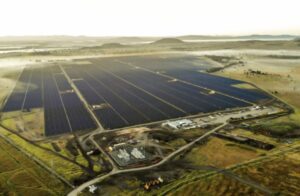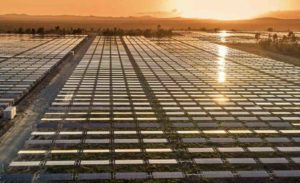The federal government is being accused by the Greens of stalling on an agreement to get Australia’s Energy Market Operator to plan scenarios for moving to 100 per cent renewables.
The scenario planning was part of the agreement on the Clean Energy Future struck with the Greens nearly a year ago, along with the introduction of a carbon price, the creation of the Clean Energy Finance Corporation and the Climate Change Authority.
The Greens wanted AEMO to consider options for moving to 100 per cent renewables – one scenario to consider how that could be done by 2030, and another by 2050, when Australia’s stated policy is to reduce greenhouse emissions by 80 per cent below 1990 levels. The planning would include setting incremental targets.
The request was also put in the context of the incredible sums being spent on upgrading infrastructure to support the current centralised electricity grid model. More than $45 billion has already been approved for the current five-year period, and a similar amount is being mooted for the next five years, although it appears state and federal governments have finally cottoned on to the potential waste. The IEA this week reinforced its views that the structure of energy systems need to be reviewed in light of the anticipated push to electricity grids dominated by renewables and distributed (rather than centralised) power generation.
Bureaucrats told Greens leader Senator Christine Milne at an estimates hearing in February that there had been delays, but that a scoping study should be released by the end of March and the study completed “around the middle of the year.”
However, in an estimates hearing last week, bureaucrats from the Department of Energy said a contract for the study was yet to be signed (curiously, it falls under the Department of Climate Change rather than the Department of Energy), and the scoping document could not be released, or work begun, until that contract had been finalised. A spokeswoman for the DCCEE told RenewEconomy it was likely to be “a few weeks” before any update could be announced.
The delay is frustrating for the Greens, and for many in the renewables industry in Australia, because it is symptomatic of the painfully slow move towards green energy in this country, notwithstanding the existence of the 20 per cent renewable energy target.
The pace of deployment of large-scale solar, for instance, remains pitiful. Over the weekend, the government announced that the Solar Flagships tender for solar PV had been awarded to a new winner, a 159MW facility to be built by AGL Energy using First Solar technology. The $450 million solar farm, however, will not be competed until 2015.
In marked contrast, Spanish firm Abengoa (ironically, a bidder in the flagships program), announced that it would construct a 200MW solar PV facility in southern California, at a cost of $260 million. It would be completed by the end of 2013, meaning it would be built in less than half the time, and at two-thirds of the cost per megawatt, than the AGL facility.
The IEA reinforced the need for rapid deployment in its Energy Technology Perspectives document, released this week, because deployment is the key to reducing costs, and more than half the costs of a solar PV farm come not from the price of modules, but from the cost of finance, infrastructure and maintenance. That explains much of the difference between the Abengoa plant, being built at $1.80/watt, to the AGL plant, being built at $2.80 – roughly the same as household rooftop systems.
The advantage of household systems is that they don’t have to compete with the wholesale price of electricity, they just need to compete with the retail (or socket) price. And because that is becoming increasingly attractive, demand for solar PV is again surging in Australia.
Sunwiz Consulting said that 95MW of rooftop solar PV had been registered in Australia in the month of May, the second-largest month on record. Part of that demand is no doubt due to the scheduled winding back of the “solar multiplier” on June 30 that helps defray the upfront cost of rooftop systems.
However, the large-scale deployment remains deadlocked again, as the large utilities still have a large surplus, and the market is again racked with uncertainty about the future of the LRET, with a large campaign pushing for its dilution or deferral.
The NSW pricing regulator, IPART, added its name to the list calling for the LRET to be dumped in light of the carbon price, even though its own figures show that green schemes added only 0.3 per cent to the cost of electricity as part of its average 18 per cent recommended price increases. The rise in green costs was more than offset by the 0.8 per cent fall in wholesale electricity costs. If IPART was serious about reducing the cost of the green schemes, rather than pandering to the demands of the large utilities, it could reduce them by one quarter if it followed the example of the ACT pricing regulator and allowed the utilities to pass on only the cost of the small-scale certificates, rather than a notional fixed price that the market has never come close to reaching.
Uncertainty over the LRET has caused the prices for renewable energy certificates to slip further in recent weeks, and they are now trading at around $36/MWh, well below where they need to be to deliver power purchase agreements for the developers of wind farms.








